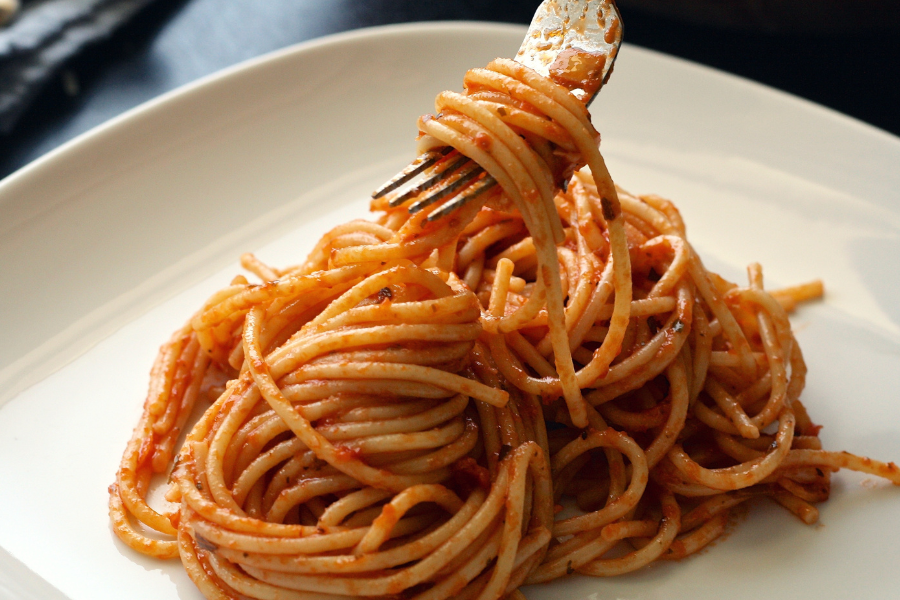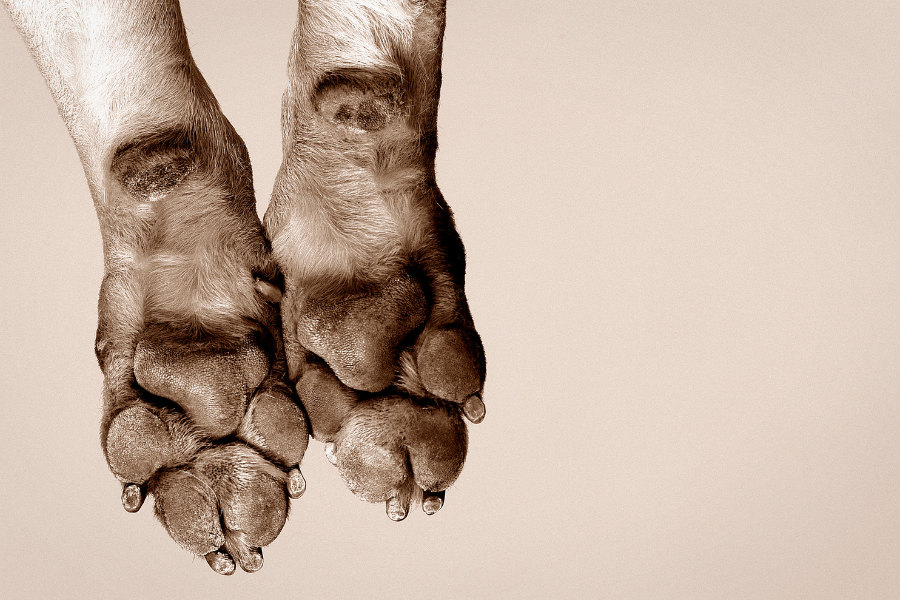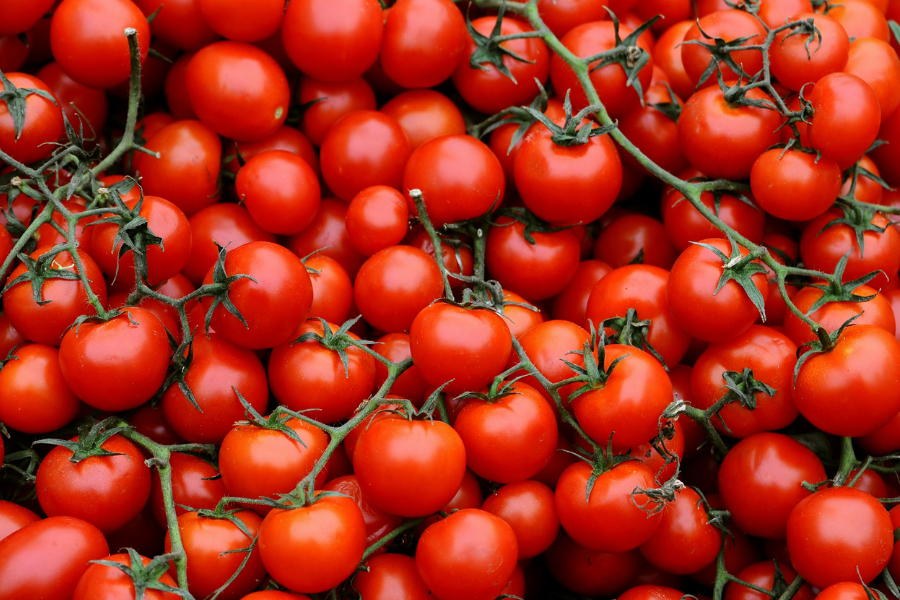Introduction
So you are the parent of an adorable pooch, and you're a pasta lover - join the club! If you have your dog by your side as much as we do, at some point you have probably eaten a huge bowl of pasta with your dog staring as you, begging for just one bite, or three.
We all know that famous scene in the Disney movie Lady and The Tramp, with the two dogs romantically eating spaghetti, but what are the actual rules and regulations (i.e. safety concerns) when it comes do dogs and pasta? In this blog, we will cover all the dos and don'ts when it comes to pups and pasta. Let's dig in!
What is Pasta Really Made Of?
Before we do anything else, let's first zero in on exactly what pasta is made from. Most classic pasta is made from durum wheat semolina, water, and (sometimes) eggs. By themselves, these ingredients are harmless, but not all pasta is created equal. Some varieties can have added flavors, spices, or sauces that may become problematic for our four-legged companions.
In fact, the ingredients in a plain pasta will be our baseline to compare others to, and help us ascertain whether it is safe to feed them. Plain pasta, because it lacks seasoning, as well as pasta sauce, is quite harmless, though this does not mean that pasta should now find a place in our dog's daily meals.
The Nutritional Value of Pasta for Dogs
Pasta, as you may have guessed, is LOADED with carbs (short for carbohydrates), and carbohydrates are essential for energy production in our bodies (and the bodies of our four-legged friends). Some pastas can also have or be enriched with B vitamins like folate.
But pasta is not what we would call an ideal food for dogs. The reason is that dogs are carnivores by nature, and they need high-quality protein and good fats as the cornerstones of their diets, both of which pasta does not have.
The takeaway here is that while un-sauced, unseasoned pasta (in small quantities) won't hurt your dog, it isn't beneficial either, and it should not be a staple of your dog's diet.
Are All Types of Pasta Safe for Dogs?
When you are thinking about whether pasta is for your pup or not, it's important to know that there are a bunch of varieties of pasta, and some are better, and safer, for your dog than others. Most plain pasta is A-okay - think spaghetti, fettuccini, or penne. If you want to make it slightly healthier, opt for whole grain pasta, which will likely be higher in fiber content and may contain more vitamins.
Steer clear of any pasta that is pre-flavored or colored, such as spinach or tomato-flavored pasta. These could contain ingredients that might upset your dog's stomach. Thus, plain, cooked pasta is the way to go.
And keep in mind, as delicious as that pasta Alfredo dish may be, or marinara sauce, they're a no-go for our furry friends! Both of them usually have spices that are toxic for dogs - garlic and onions. So, just make sure to check the ingredients first. Safety first, food fiestas second!
How to Introduce Pasta to Your Dog's Diet
If you've decided to try pasta with your dog, introduce it very slowly. Test with a small amount since you won't know how your dog will react, and observe your dog closely for 24-48 hours post pasta. Look for any digestive problems like vomiting or diarrhea.
An important note - pasta should be well-cooked. It should also not be piping hot when you give it to them, and without addition of salt, oil, or any other forms of condiments or seasonings - just plain and simple pasta on its own, or mixed into your dog's food.
Before adding new food to the dog's diet, it is advisable to consult with your vet ahead of time!
Signs Your Dog Loves (or Hates) Pasta
Just like us, your dog has food and textures they prefer, and dislike. This means that some dogs out there (as much as this may surprise you) won't be in love with pasta and all things Italian. Here are some cues to look for to determine whether your dog is in love, or not in love with pasta:
Your dog is a pasta lover:
- Tail wags.
- Excited barking.
- Quickly eating the pasta you fed them.
- They hit their bowl wanting more.
Your dog is not a pastafarian:
- They turn their head away from, or ignore the pasta in their bowl.
- Pasta gives them GI distress.
Potential Risks of Feeding Pasta to Dogs
So while a little little pasta is most likely not going to be dangerous for your pup, there are safety considerations and risks to think about before pulling the pasta trigger. The first one is that if you overdo it and feed your dog a lot of pasta, they will likely gain weight. If your dog is already heavy or over their ideal weight, this is not ideal (to put it lightly).
Just like a lot of humans, dogs can also be sensitive or allergic to the protein in wheat pasta - gluten. So if you notice your dog having any belly issues, this could be the cause. If you suspect that your dog is allergic to gluten, you could opt for gluten free pasta.
The secret sauce here is moderation and a close watch on your pooch when they're chowing down on pasta.
Why Balance is Key in a Dog's Diet
So you know how we humans need a bunch of stuff to keep our bodies running well? Like our greens, protein and vitamins? Well, our canine pals are pretty similar! They also need balance (albeit in different amounts) in their food intake.
Think of pasta for dogs as like their version of a cheat meal - a tasty break from the norm, but it's definitely not on their daily menu. Their real rockstars are things like complete proteins, beneficial fats and their team of vitamins and minerals. These are like the fuel to keep their tails wagging and coats shining,
So, it is totally ok to mix it up from time to time with some pasta for your pup, but remember, the foods made especially for our furry friends give them the right rhythm for their nutritional dance.
Fun Pasta Treats for Your Dog
If your dog enjoys pasta, there are creative ways to incorporate it into their treat routine. Here are a few simple recipes:
- Pasta Pup-sicle - Freeze cooked pasta with a little chicken broth for a refreshing summertime treat.
- Pasta & Veggie Mix - Combine cooked pasta with dog-safe veggies like carrots and peas for a crunchy delight.
- Pasta Kong Filler - Stuff a Kong toy with pasta and peanut butter for a challenging puzzle treat.
Remember, treats should only make up a small percentage of your dog's daily calorie intake. Always monitor their weight to avoid overfeeding.
Conclusion
To bark (AKA wrap) things up here: dogs can have pasta, but it by no means should be a staple in their diet. If you are going to feed your pooch some pasta, stick to plain, cooked pasta without any seasoning, spices, or or sauces. The most important word to remember here is moderation.
In small amounts, pasta can be a fun treat to mix things up for your furry friend, but only sporadically or on special occasions. Just remember, when in doubt, ask your veterinarian.
References
1) Cerquetella M, Spaterna A, Laus F, Tesei B, Rossi G, Antonelli E, Villanacci V, Bassotti G. Inflammatory bowel disease in the dog: differences and similarities with humans. World J Gastroenterol. 2010 Mar 7;16(9):1050-6. doi: 10.3748/wjg.v16.i9.1050. PMID: 20205273; PMCID: PMC2835779.



